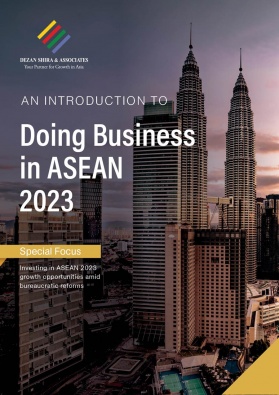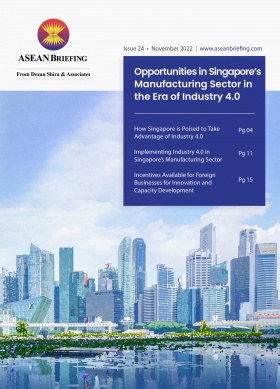Singapore and Vietnam Sign MoUs to Enhance Economic Cooperation
Singapore and Vietnam have signed several Memoranda of Understandings (MoU) to enhance economic cooperation. The MoUs cover collaboration on trade, the green-digital economy, and maritime and port cooperation.
Singapore and Vietnam have signed several MoUs to enhance economic cooperation in key sectors on February 9, 2023. The signings were witnessed by Singapore Prime Minister Lee Hsien Loong and Vietnamese Prime Minister Pham Minh Chinh on the sidelines of the latter’s official visit to Singapore.
What MoUs were signed between Singapore and Vietnam?
MoU on economic trade and cooperation
The MoU on economic trade and cooperation builds on the MoU signed between Singapore and Vietnam in February 2022.
The MoU will develop implementation activities for 2023 which includes deepening agri-trade cooperation through business matchmaking and facilitating Singapore companies to invest in Vietnam’s agriculture and logistics sector.
Further, this MoU seeks to enhance cooperation in liquified natural gas, renewable energy, and electricity projects.
Singapore remained Vietnam’s largest foreign investor for the third consecutive year with over 3,600 projects worth more than US$70 billion at the end of 2022. In 2022, Singapore invested some US$6.46 billion into Vietnam, accounting for 23 percent of all foreign direct investment into the country. Singapore also remained the largest foreign investor for the first two months of 2023 with investments worth US$978 million.
Key sectors that Singaporean businesses where invested include manufacturing, real estate, and wholesale and retail trade. Vietnam’s financial sector is also emerging as a strong draw for Singaporean investors.
MoU on green-digital economic partnership
The MoU on green-digital economic partnership provides a framework to advance collaboration on the green and digital economy, covering aspects such as connectivity, digital innovation, sustainability, and infrastructure.
Singapore aims to offer its expertise to assist in Vietnam’s digital transformation, particularly in priority areas such as e-commerce, finance and banking, and population management.
Further, in terms of the green economy, Singapore will assist Vietnam in its fair energy transition, with an eye towards zero emissions by 2030. The two countries are looking to develop an electricity grid that links Singapore and Vietnam which aims to be a model for electricity trade and cooperation in ASEAN.
Further, Vietnam’s 3,260km coastline has a strong potential to produce solar and wind energy which can then be exported to Singapore. Offshore wind power has significant room for growth in Vietnam, particularly as the country is highly dependent on coal imports for its electricity needs.
Vietnam has average wind speeds as high as 10m/s in its southeastern provinces and coastline. The World Bank forecasts that Vietnam’s offshore wind power potential could reach 500 GW by 2030.
MoU on maritime and port cooperation
Singapore and Vietnam will seek to enhance maritime and port cooperation, particularly in relation to port digitalization, maritime training of personnel, green shipping initiatives, and port control inspections.
With its long coastline, Vietnam presents ample opportunities for seaport operations and infrastructure modernization. It is expected that the country needs an estimated US$13 billion in investments to develop a modern seaport system.
The Vietnamese government introduced a masterplan for the development of the country’s seaports over the next 10 years. Under the plan, the seaports are divided into five clusters which are distributed along the country’s coastline. Further, the government has targeted the ports to handle between 1.1-1.4 billion tons of cargo, a huge increase from the current 500 million tons capacity.
The Maritime and Port Authority (MPA) of Singapore is well-positioned to assist Vietnam in achieving its maritime goal. The MPA is a statutory body under Singapore’s Ministry of Transport tasked with regulating and managing port and marine services.
The Port of Singapore is strategically located at the crossroads of East-West trade channels and is connected to 600 ports in over 120 countries. The port also handles over 37.2 million twenty-foot equivalent units (TEUs) of containers and 626.2 million tons of cargo annually, making it one of the world’s busiest.
In addition, the government is looking to expand this further when the Tuas Mega Port is completed in 2040, which will be the largest container terminal in the world with a combined 65 million TEU capacity of the current five port terminals.
About Us
ASEAN Briefing is produced by Dezan Shira & Associates. The firm assists foreign investors throughout Asia and maintains offices throughout ASEAN, including in Singapore, Hanoi, Ho Chi Minh City, and Da Nang in Vietnam, in addition to Jakarta, in Indonesia. We also have partner firms in Malaysia, the Philippines, and Thailand as well as our practices in China and India. Please contact us at asean@dezshira.com or visit our website at www.dezshira.com.
- Previous Article Philippines Ratifies RCEP Agreement: Opportunities for Businesses
- Next Article Vietnam to Ease Visa Requirements to Boost Tourism Industry








